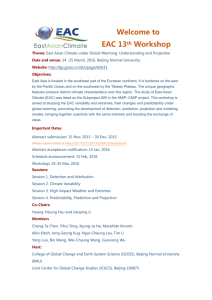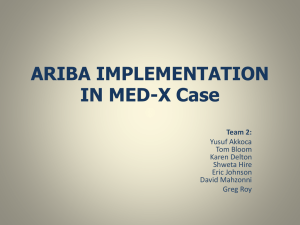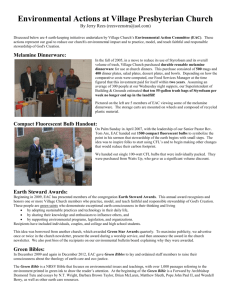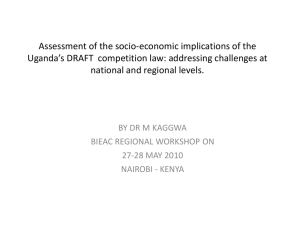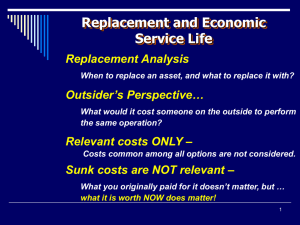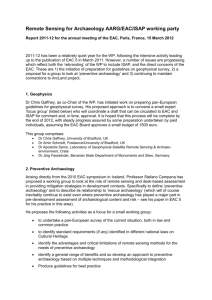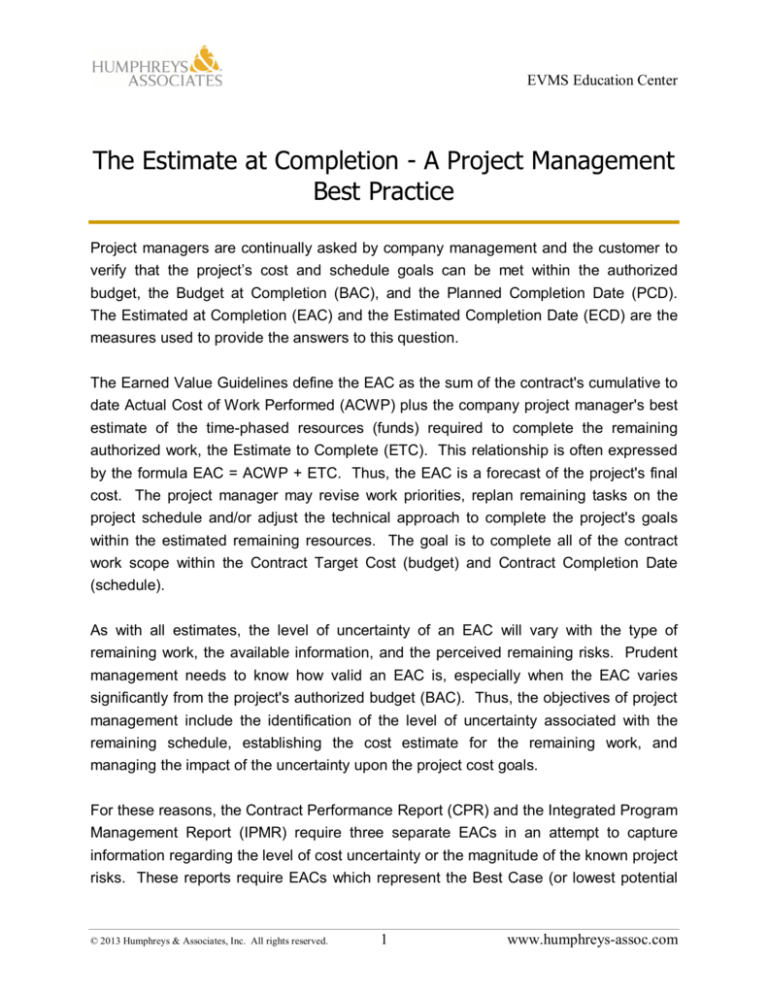
EVMS Education Center
The Estimate at Completion - A Project Management
Best Practice
Project managers are continually asked by company management and the customer to
verify that the project’
s cost and schedule goals can be met within the authorized
budget, the Budget at Completion (BAC), and the Planned Completion Date (PCD).
The Estimated at Completion (EAC) and the Estimated Completion Date (ECD) are the
measures used to provide the answers to this question.
The Earned Value Guidelines define the EAC as the sum of the contract's cumulative to
date Actual Cost of Work Performed (ACWP) plus the company project manager's best
estimate of the time-phased resources (funds) required to complete the remaining
authorized work, the Estimate to Complete (ETC). This relationship is often expressed
by the formula EAC = ACWP + ETC. Thus, the EAC is a forecast of the project's final
cost. The project manager may revise work priorities, replan remaining tasks on the
project schedule and/or adjust the technical approach to complete the project's goals
within the estimated remaining resources. The goal is to complete all of the contract
work scope within the Contract Target Cost (budget) and Contract Completion Date
(schedule).
As with all estimates, the level of uncertainty of an EAC will vary with the type of
remaining work, the available information, and the perceived remaining risks. Prudent
management needs to know how valid an EAC is, especially when the EAC varies
significantly from the project's authorized budget (BAC). Thus, the objectives of project
management include the identification of the level of uncertainty associated with the
remaining schedule, establishing the cost estimate for the remaining work, and
managing the impact of the uncertainty upon the project cost goals.
For these reasons, the Contract Performance Report (CPR) and the Integrated Program
Management Report (IPMR) require three separate EACs in an attempt to capture
information regarding the level of cost uncertainty or the magnitude of the known project
risks. These reports require EACs which represent the Best Case (or lowest potential
© 2013 Humphreys & Associates, Inc. All rights reserved.
1
www.humphreys-assoc.com
cost), the Worst Case (or highest potential cost) and the Most Likely EAC (the project
manager's best estimate) with their respective forecasted completion dates---generally
referred to as Estimated Completion Dates (ECDs).
Another important factor to consider regarding realistic EACs and customer reporting is
the Sarbanes/Oxley Act. Unrealistic EACs reported in publicly owned companies are
subject to the consequences of this Act. The Sarbanes-Oxley Act came into force in
July 2002 and introduced major changes to the regulation of corporate governance and
financial practices. With regard to periodic statutory financial reports (i.e., Company
Annual Reports) the Act requires that a company include certifications that: The
financial statements and related information fairly present the financial condition and the
results in all material respects. Financial statements published by issuers are required
to be accurate and presented in a manner that does not contain incorrect statements.
Note that the financial information on CPRs and IPMRs directly feed corporate annual
reports and that serious overrun or underrun conditions will effect the profit statements
in these reports. The Act also imposes penalties and fines and/or imprisonment for
altering, destroying, mutilating, concealing, falsifying records, documents or tangible
objects with the intent to obstruct, impede, or influence a legal investigation.
Since the actual cost to date is a known value, EAC uncertainty is a function of the
Estimate to Complete. The ETC is prepared by re-estimating the resources required to
complete the remaining authorized work using the cost experience to date and then
applying a number of other factors; such as current direct and overhead rates, Schedule
Risk Assessment (SRA), Monte Carlo simulations, root cause analysis, etc.
A well conceived ETC also considers purchase order commitments, anticipated labor
efficiency and rate, material price and usage, Other Direct Cost (ODC) price and usage
performance, risk and opportunities, resources by type, and other factors identified by
higher management. Additionally, as the ETC is being developed it should be mapped
to the current schedule consistent with the Estimated Completion Date (ECD).
As a means to cross-check the EAC, a mathematical or independent estimate of the
EAC is typically prepared using performance indices based upon the cost and schedule
experience to date. For example, the Cost Performance Index (CPI) (cumulative
Budgeted Cost for Work Performed / ACWP) can be used to complete the EAC by
dividing the project BAC by the CPI. The resulting EAC is often referred to as the
© 2013 Humphreys & Associates, Inc. All rights reserved.
2
www.humphreys-assoc.com
EVMS Education Center
Independent EAC (IEAC) to distinguish it from a formal or grass roots EAC. The IEAC
can be quickly prepared and then used to test the reasonableness of the current cost
estimate and to indicate when a comprehensive EAC should be undertaken. It is
important to note that these calculations do not consider any “thinking” about the
considerations mentioned above with respect to anticipated labor efficiency and rate,
risk and opportunities, SRA, etc. It is often said that they are independent of sanity, logic
and judgment but are calculated for comparative analysis---an important purpose.
The capability to regularly prepare an EAC along with the calculation of the Best Case,
Worst Case, and Most Likely EACs is becoming an industry best practice. At least
annually, a complete “bottoms-up”EAC, called the Comprehensive EAC, is required on
those projects subject to the DFAR 252.234-7002 Earned Value Management System
requirements. A comprehensive EAC is also often prepared at the start of a major
project phase; such as the start of production or construction. Consequently, it can
reflect the reduced uncertainty resulting from a design release and/or a released bill of
material, which enables the project manager to answer these questions:
y
y
y
y
Are the remaining authorized funds sufficient to complete the project?
Is prior cost experience a predictor of future cost performance?
Should the remaining project be modified based upon the performance to
date?
Will the project cost performance impact the corporate financial condition?
Thus, a timely and realistic EAC and ECD should be an integral part of both project
management and corporate financial management practices. Both should require
routine comparison of the EAC and ECD with the contract targets to forecast realistic
financial performance for customers and stockholders.
© 2013 Humphreys & Associates, Inc. All rights reserved.
3
www.humphreys-assoc.com

